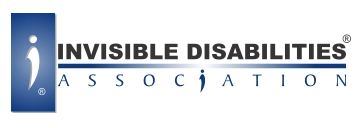In general, the term disAbility is often used to describe an ongoing physical challenge. This could be a bump in life that can be well managed or a mountain that creates serious changes and loss. Either way, this term should not be used to describe a person as weaker or lesser than anyone else. Every person has a purpose, special uniqueness and value, no matter what hurdles they may face.
In addition, just because a person has a disAbility, does not mean they are disAbled. Many living with these challenges are still fully active in their work, families, sports or hobbies. Some with disAbilities are able to work full or part time, but struggle to get through their day, with little or no energy for other things. Others are unable to maintain gainful or substantial employment due to their disAbility, have trouble with daily living activities and/or need assistance with their care.
According to the Americans with Disabilities Act of 1990 (ADA) an individual with a disAbility is a person who: Has a physical or mental impairment that substantially limits one or more major life activities; has a record of such an impairment; or is regarded as having such an impairment (Disability Discrimination).
Furthermore, “A person is considered to have a disability if he or she has difficulty performing certain functions (seeing, hearing, talking, walking, climbing stairs and lifting and carrying), or has difficulty performing activities of daily living, or has difficulty with certain social roles (doing school work for children, working at a job and around the house for adults)” (Disabilities Affect One-Fifth of All Americans).
Often people think the term, disAbility, only refers to people using a wheelchair or walker. On the contrary, the 1994-1995 Survey of Income and Program Participation (SIPP) found that 26 million Americans (almost 1 in 10) were considered to have a severe disAbility, while only 1.8 million used a wheelchair and 5.2 million used a cane, crutches or walker (Americans with Disabilities 94-95). In other words, 74% of Americans who live with a severe disAbility do not use such devices. Therefore, a disAbility cannot be determined solely on whether or not a person uses assistive equipment.
The term invisible disAbilities refers to symptoms such as debilitating pain, fatigue, dizziness, cognitive dysfunctions, brain injuries, learning differences and mental health disorders, as well as hearing and vision impairments. These are not always obvious to the onlooker, but can sometimes or always limit daily activities, range from mild challenges to severe limitations and vary from person to person.
Also, someone who has a visible impairment or uses an assistive device such as a wheelchair, walker or cane can also have invisible disAbilities. For example, whether or not a person utilizes an assistive device, if they are debilitated by such symptoms as described above, they live with invisible disAbilities.
Unfortunately, people often judge others by what they see and often conclude a person can or cannot do something by the way they look. This can be equally frustrating for those who may appear unable, but are perfectly capable, as well as those who appear able, but are not.
The bottom line is that everyone with a disAbility is different, with varying challenges and needs, as well as abilities and attributes. Thus, we all should learn to listen with our ears, instead of judging with our eyes.

